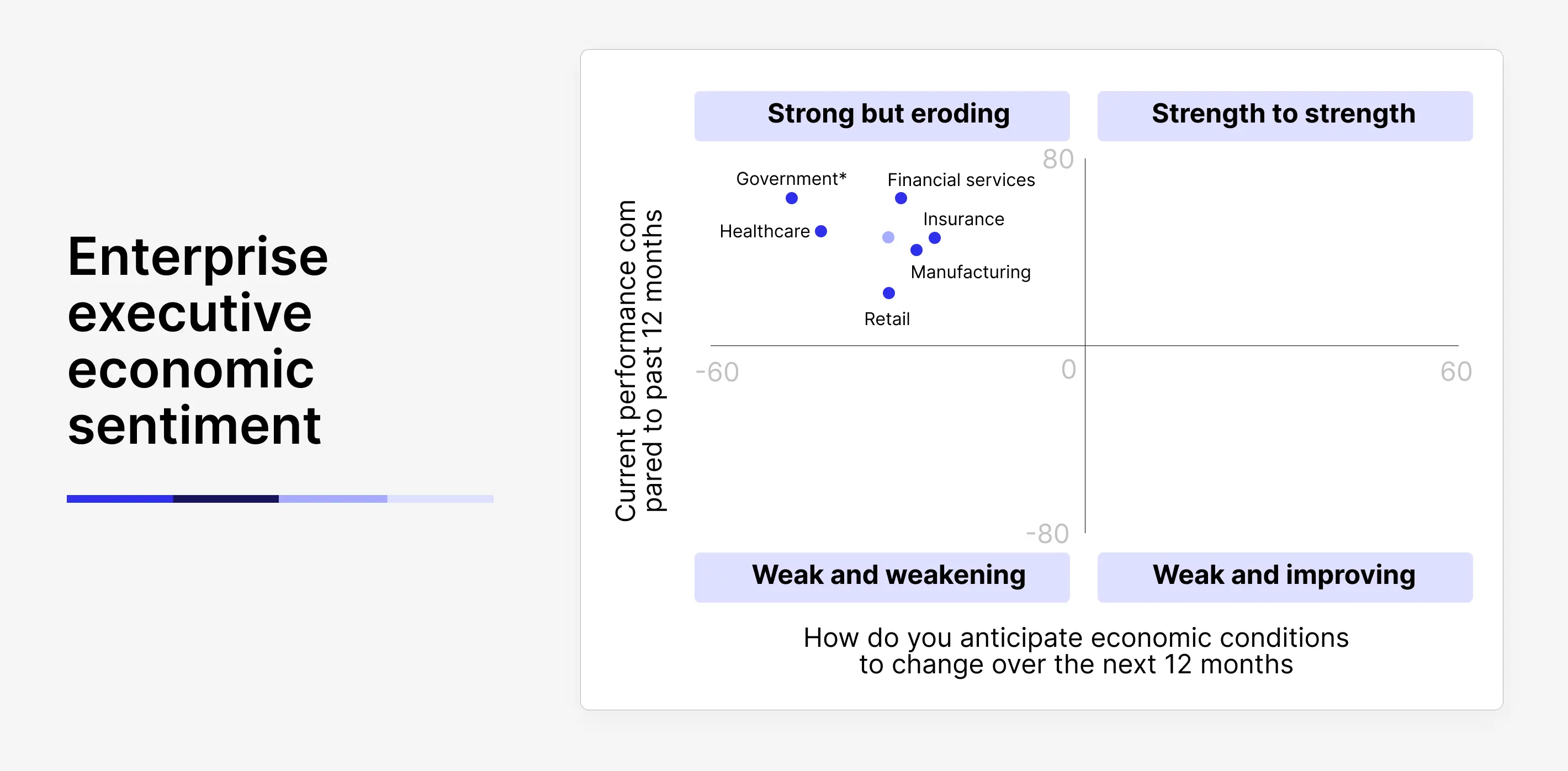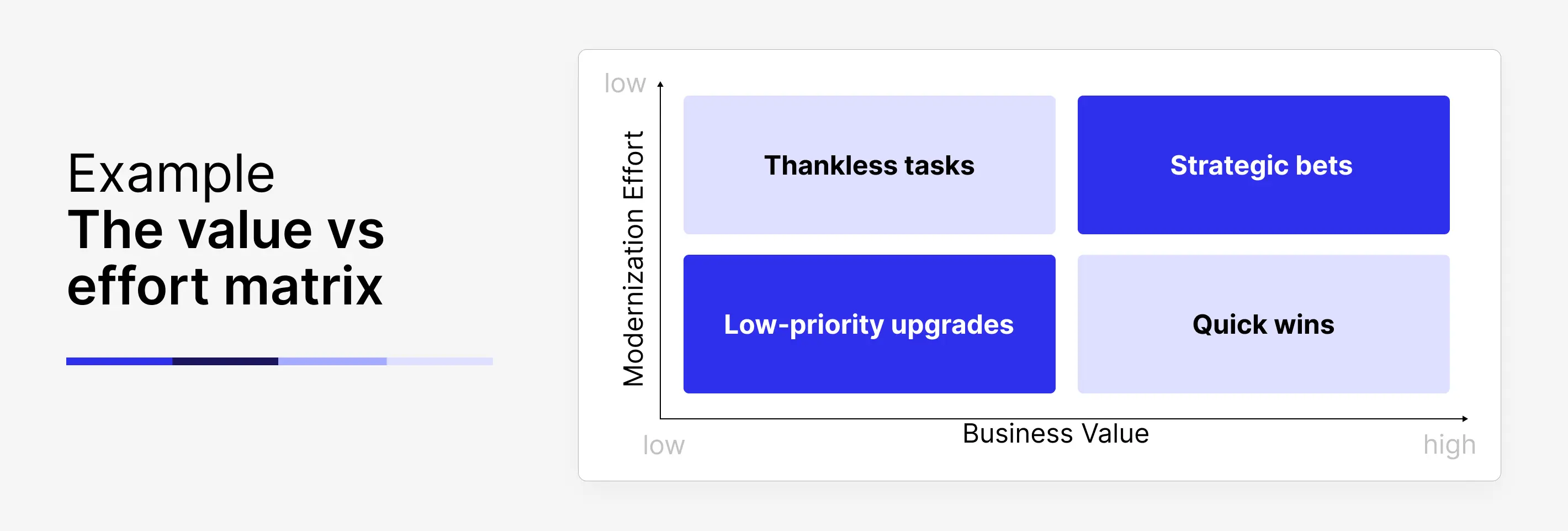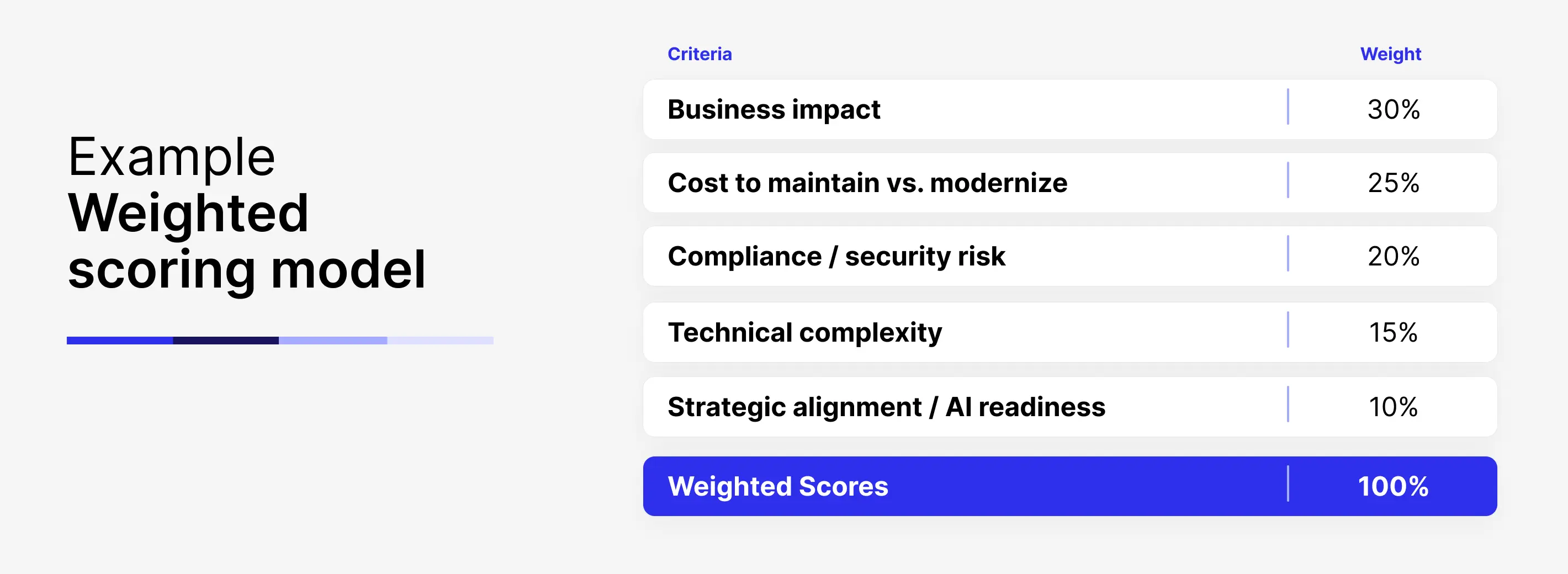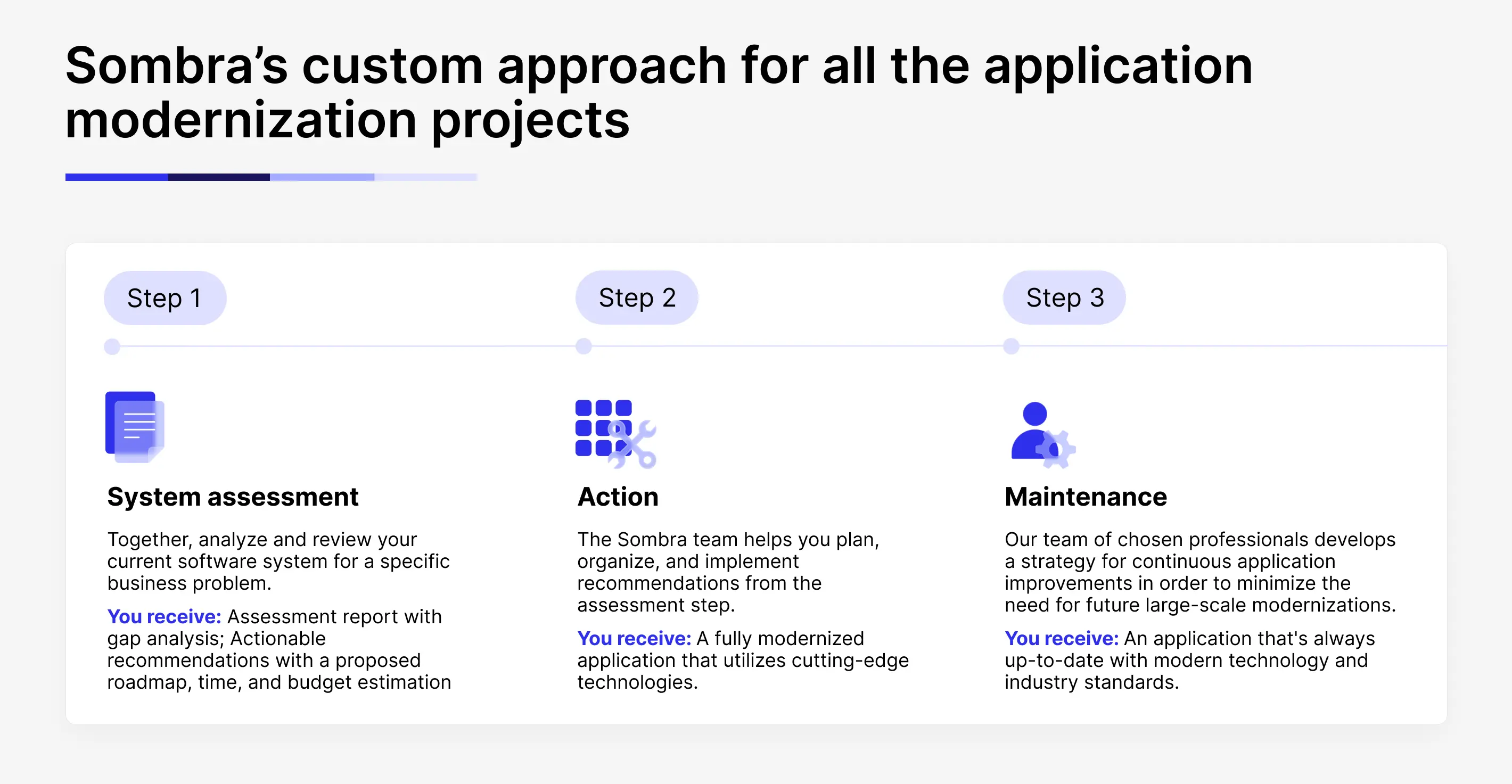Still think legacy app modernization is just a hype wave that’s passing? Think again. Without a timely software upgrade, you’re gambling your business’ continuity and reputation.
The problem of outdated systems is real and it’s here: the global application modernization services market is predicted to increase from $24.32 billion in 2025 to $98.38 billion by 2034.

Source: Precedence research
The growth of this market is due to the increasing demand for scalable, secure, and cloud-ready solutions that can replace outdated legacy infrastructure across regulated and data-intensive industries, such as BFSI.
The modernization of applications that facilitate payment processing, identify fraud, manage risks, and onboard customer transactions has become a priority for financial institutions.
But with all this momentum comes noise. Companies risk doing too much, too soon, or in the wrong order — burning budgets with little ROI. Indeed, part of the problem lies in the vast array of technologies and tools decision-makers often find themselves at a crossroads, pressured to make choices with uncertain outcomes.
The real challenge, though? It’s not whether to modernize — it’s what to modernize first.
Executives now need to focus on value.
Withover 10 years of experience in modernizing legacy software, we have compiled a list of tools you can utilize today to prioritize the extensive backlog of your modernization projects without falling into analysis paralysis.
The cost of getting prioritization wrong
First let’s talk about a few key scenarios you’d (really) like to avoid:
‘Everything at once’ application modernization approach
When your application modernization projects are not well planned and prioritized, budgets quickly spiral beyond initial estimates.
Starting early in the second quarter of 2025, there has been an “uncertainty pause,” encompassing a strategic suspension of net-new spending across various sectors, including IT. This pause is driven by heightened economic uncertainty and geopolitical risks.
In response, the global corporate sector is exercising increased caution, as organizations seek to mitigate adverse impacts from these multifaceted challenges.

Source: Gartner
Therefore, running monolithic applications on cloud virtual machines instead of refactoring them for containers or serverless architectures leads to unexpectedly high costs. At the same time, modernizing everything all at once can further increase your expenses, making application modernization feel like a financial black hole.
Hidden penalties of poor sequencing
Another great example of neglecting ROI-focused app modernization shows in poor sequencing. It often goes hand in hand with a lack of clear objectives, inadequate planning, and insufficient resources. And result in runaway OpEx, duplicated efforts, and change fatigue.
Run-away operational expenditures (OpEx) refer to an uncontrolled increase in operational expenses associated with modernizing applications, often due to poor planning or execution.
This can manifest as escalating cloud costs, inefficient resource utilization, or unforeseen maintenance expenses.
A company might migrate an application to the cloud without optimizing its resource usage, leading to excessive compute and storage costs. By implementing cost monitoring and optimization strategies, they can reduce their cloud spend and prevent runaway OpEx.
Duplicated efforts often occur due to the absence of a clear strategy, resulting in rework, scope creep, and inefficient resource utilization. This can manifest as multiple teams working on the same functionality, redundant codebases, or even contradictory modernization approaches within the same organization.
Then, there’s also change fatigue. 71% of employees reported to be frustrated with the level of change they experienced.
Development teams may find it difficult to continuously take on projects related to modernization, feeling like they are in a never-ending loop. Meanwhile, business users work with these applications every day and may be hesitant to embrace changes.
Where does this lead us?
Application modernization projects chosen and prioritized correctly have a much higher chance of success. The solution isn’t about spending more money; it’s about improving the way we sequence our efforts
Done right, app modernization makes every dollar spent justify its return.
So where should you begin?
Prioritization approaches
From what not to do, let’s move to what to focus on first. How should your organization prioritize application modernization projects?
Value–effort matrix (2×2 “Quick‑Win” grid)

This classic prioritization tool works the best early in your modernization journey when you work with limited data.
Plot each application or modernization initiative on a grid:
- X-axis: Business value
- Y-axis: Modernization effort
It helps you to evaluate potential of the projects by categorizing them into four quadrandts:
- Quick wins (high value, low effort),
- Strategic Bets (high value, high effort),
- Low‑Priority Upgrades (low value, low effort),
- Sunset aka Thankless Tasks (low value, high effort).
Understanding the value and effort associated with each of your app modernization initiative will help you make the informed decision about where to direct the business resources.
Pro tip: Use AI-powered code scanning tools to refine your “effort” estimates. They’ll help you identify technical debt, complexity hotspots, and refactoring challenges before you invest.
After you’ve created the value-effort matrix for your app modernization projects, we suggest, that you start with the projects you’ve placed into the “Quick wins” quadrant. Next, plan and fund the ones located in “Strategic bets.” Then, defer or bundle the “Low-priority upgrades.” At last, retire, outsource, or isolate the “Thankless tasks.”
Weighted scoring model
Another classic project prioritization technique, which forces IT leaders to focus on what truly matters, reduces bias, and makes decision-making more transparent.

To implement a weighted scoring model, you need to assign each app or modernization initiative a 1–5 score across the following criteria:
- Business impact (30 %)
- Cost to maintain vs. modernize (25 %)
- Compliance / security risk (20 %)
- Technical complexity (15 %)
- Strategic alignment / AI readiness (10 %)
Then, multiply the score for each project by the weight of the corresponding criterion. Finally, repeat this process for all the criteria and sum the weighted scores for each project or initiative.
Once you’ve calculated the weighted scores, analyze the results and rank them into “Modernize Now,” “Monitor,” and “Retire” tiers as well as add the projects to your backlog.
It’s best to use the weighted scoring model when you have enough metrics, like cost, incident count, user stats, etc. to support the numeric scoring.
Sombra pro tip: Re‑score quarterly; small changes in weights can reprioritize projects as your application modernization strategy and business goals evolve.
Cost‑of‑delay and risk lens (WSJF‑inspired)
The final technique for prioritizing your app modernization projects is a Weighted Shortest Job First-inspired Cost‑of‑delay and risk lens. A method for prioritizing work items to maximize business profit.

To calculate your WSJF score, you need to divide the cost of delay (lost revenue, fines, missed growth) by job size (LoE in story points or person‑months). The higher the score, the higher the priority of your project.
This method is best to use if you have any time-sensitive work, like regulatory deadlines or competitive opportunities, such as a new market launch.
Sombra pro tip: Leverage predictive analytics to estimate future incident costs, improving the accuracy of the Cost of Delay.
How Sombra Helps You Modernize — With ROI in Mind
Once you’ve identified your high-impact modernization priorities, the next step is execution. This is where Sombra becomes a partner, not just a vendor.
Over the years we’ve built a custom approach for all the application modernization projects we worked with, from the financial services domain to logistics and healthcare. The one that would focus on transforming our clients’ challenges into success stories.
Here’s how we work with your legacy systems to deliver lasting value:

Step 1: Assessment
We sit down with a client to ask:
- What’s working, what’s not?
- Where are you losing money, time, or talent?
- Which systems support your core business processes — and which ones are legacy anchors?
Rather than generic audits, we build a clear picture of your app ecosystem with gap analysis, technical health checks, and a business-aligned roadmap.
The client walks away with a clear modernization plan, complete with time and budget estimates they can take to the board.
Step 2: Execution
Once we identify where the value lies, we begin our work.
No major rewrites or endless refactoring cycles. We focus on quick wins that build momentum and user trust.
Whether it’s migrating an app to the cloud, re-architecting for performance, or hardening security, our engineers move with purpose, balancing innovation with risk management every step of the way.
Step 3: Support and maintenance
Modernization is never “done.” But it also shouldn’t feel like a hamster wheel. We assist our clients in implementing continuous improvement practices that preventfuture tech debt and ensure systems meet user needs and business objectives..
Through performance monitoring, DevSecOps pipelines, and proactive refactoring, we ensure your applications evolve — seamlessly and without chaos.
The client receives a tech ecosystem that’s modern today, and ready for what’s next — whether that’s AI adoption, international scale, or regulatory shifts.
Ready to move from ideas to impact? Contact us.
Conclusion
There is no universal formula for prioritizing application modernization projects: what provides ROI in one organization may not succeed in another.
The key is to choose a prioritization framework that aligns with the data you have and decision-making culture, rather than forcing a one-size-fits-all model.
As market dynamics shift, regulations tighten, and AI capabilities advance, your priorities must evolve too. That means regularly reassessing not just what you invest in, but why and when.
A healthy application modernization balances “quick wins” that unlock near-term value with “strategic bets” that prepare your business for what’s next. Nail that balance, and you don’t just maximize ROI in the moment, you build lasting competitive advantage.






